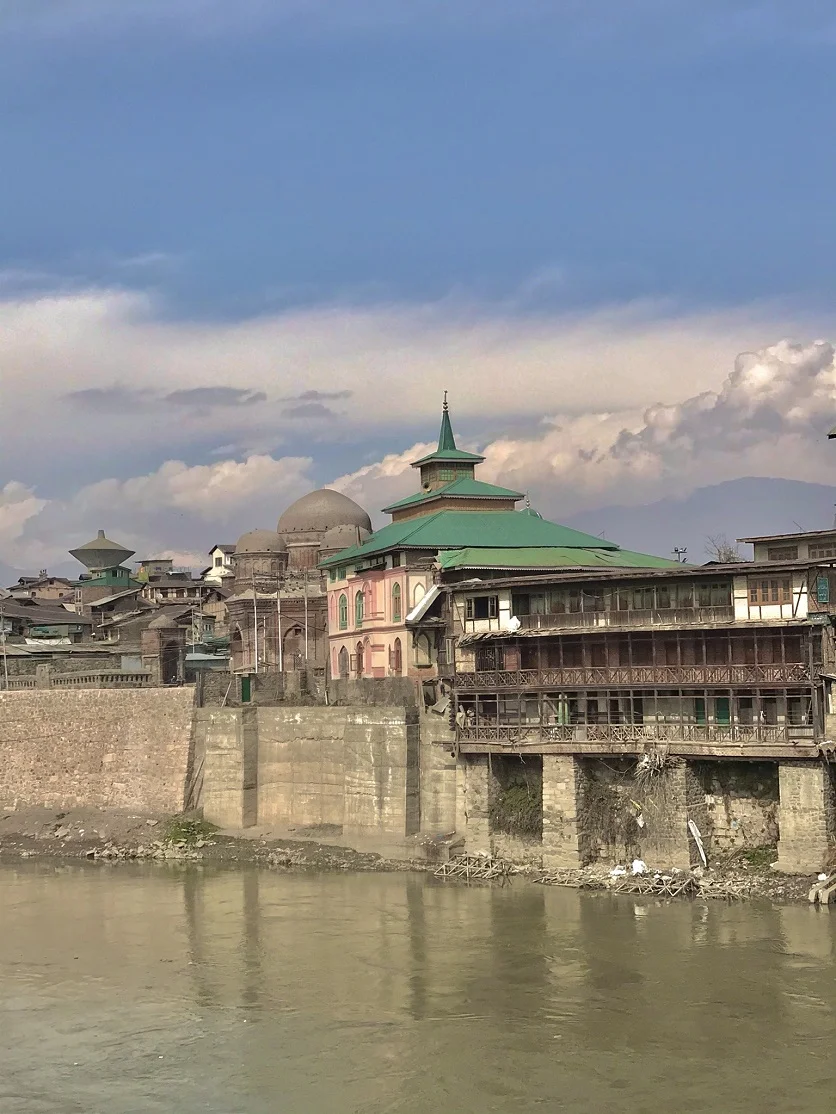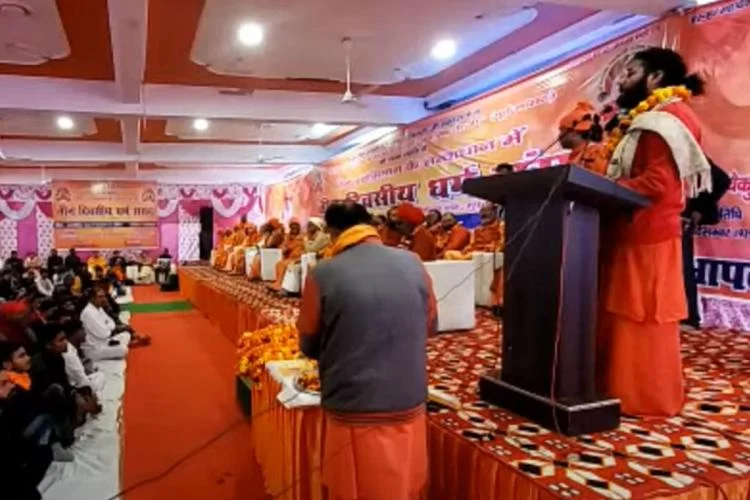
By Shoaib Mohammad
I was once asked by a friend of mine if I had read the famous novel ’40 Rules of Love’ by Elif Shafak. I replied in the negative. He praised the work for its ‘beautiful portrayal of Sufism’ and insisted that I read it too. I did read it eventually, after the circulation of its praises felt overwhelming, only to feel utterly betrayed. This sense of betrayal is not something I believe was exclusive but in fact, is the same for anyone who is familiar with the subject in its authenticity. The only thing that errs us though is that we don’t want to seek authenticity anymore.
Our land Kashmir is often hallmarked as ‘peer’i waer’ or ‘resh waer’ –‘the valley of saints’, for the history of its close and interwoven relation with mysticism. Even before the advent of Islam, it had the influence of Trika Shaivism which shared its resemblance with Islamic mysticism in its monistic philosophy. We can trace its history from Lal Ded, the most remembered Shaivite mystic of 14th century, to Syed Mirak Shah Kashani, a revered 20th century Sufi saint. This history doesn’t only entail a mere abundance of mystics, or of their literary contribution to our language but most notably, it entails their interwoven relation with the people and how that relation has shaped our ethos and culture. Mystics have been at the locus of religio-ethical sphere of our society. Their position in history is seen as that of personages of harmony, mutual-understanding and love among the people of diverse faiths. One of the reasons of Islam’s flourishing in Kashmir was because of the emphasised perpetuation of its spiritual dimension –tasawwuf by the early Sufis that came to Kashmir in the 14th century, the earliest of them being Syed Sharf-ud-din Abdul Rahman Shah or, as commonly known, Bulbul Shah. He is credited as the earliest missionary of Islam to Kashmir who invited and converted the then ruling king Rinchen Shah to Islam.
This spiritual fecundity and with that the knowledge, canons of art and literature that followed is what we are home to. The literature produced by poets and mystics alike is nothing short of remarkable. Lal Ded’s ‘vaakh’ that impart esoteric truths and advices, Noor-ud-din Noorani’s ‘shru’ik’ which address and advise people collectively, Rasool Mir’s unparalleled eloquence in romantic poetry or Wahab Khaar’s profound expounding on Sufi thought; all of these are examples of a rich and bounteous canon of literature produced over the centuries, inspired by tasawwuf, the reality which connects us with the central Asian and other Muslim regions.
Instead of being conscious of such realities, we give in to the orientalist tropes that are perpetuated by popular authors time and time again. We have forfeited our literature, and the wisdom that it would entail now only remains in the memories of the past. The thirst of spiritual readings now is being quenched by readings of orientalist works. The fact that a novel like ‘40 Rules of Love’ is highly encouraged and entertained among our young generation speaks of our orientalised mentality. We are so distant and detached from our own history, culture and identity that we can’t discern what Shafak has produced in the novel, which is nothing short of a watered-down version of Islam and Sufism to match the appetite of western readership. Two of the most respected figures in the history of Sufism, Mawlana Rumi and Shams Tabriz are reduced down to mere agents of ‘love’ in a ‘feel good’ manner while they’re de-contextualised from their religious foundations. Any taste for Islam is strongly negated and we, as deficient as we are, play along the whole narrative like mindless minions. The cover of the book every now and then circulates in a Dal lake reel or a Naseem Bagh photo-shoot in an attempt to please the aesthetic vocations of a severely attention deficient society. While Shafak does claim no expertise on the subject of Sufism, we still subliminally sketch a skewed image of the subject in the process of reading her. Therefore, the main problem lies not with the author but with the readership, especially the readership which shares some identity with the subject.
Shafak is only one of such authors that are among the perpetrators of the ‘New Age spiritualism’ –the secular attempt of replacing the spiritual aspect of religion without having to deal with the religion itself. Although this wave has seen momentum in the West, it’s unfortunate that its fringes are caving in the eastern world as well. Coleman Barks, an American Poet revered for his ‘translations’ of Rumi’s Masnavi has helped in making Rumi the ‘best-selling poet of America’.[1] Although the contribution is commendable, he is often severely criticized for the misrepresentation of Rumi’s ideas. Regarding these new age ‘translations’ Omid Safi, a professor of Asian and Middle Eastern Studies at Duke University states that he views it as a type of ‘spiritual colonialism’, an ongoing process of erasing, and occupying a spiritual landscape lived by Muslims from Bosnia to South Asia.[2] Not so surprisingly, Barks who wrote for the American readership, has found his works being read and championed in the Muslim world too. This includes Kashmir as well. Just like ‘12 Rules of Love’, Barks’ translations have found a good wave of readership among the young generation here. The idea of ‘Hoor’, which originally had much deeper and diverse meanings in religious context will now exclusively mean ‘a perfect satisfaction of all our sexual wanting’.[3] The reality of Sufism is now being moulded away from its bedrock foundation, i.e. Islam into the ‘new age spiritualism’ and clearly, even we Kashmiris, the inhabitants of ‘resh waer’ are aiding in the process.
The spiritual and the religious has lost meaning for us. What now remains of them is their aesthetic symbolism. We have reduced our places of spiritual meaning and healing, khanqas, dargas, to mere props in the frames of our social media posts. The devotion, longing and emotions of devotees mean to us only as much as it would to create a ‘beautiful’, ‘woke’ and ‘meaningful’ frame on the internet. Their essential significance now remains in the memories of our ancestors and we are deliberately replacing the essential with the aesthetic, denying ourselves the spiritual legacy we rightfully inherit. If anything, we like our spiritual ethos only for its ‘love and kindness’ while we ignore its emphasis on self-purity, submission and devotion to religion –just like the New Age spiritualists.
The reasons for this untoward leaning of ours can be much explored and debated. However few things remain clear: that we are the active agents in the erasure of our Mystical Heritage and that we have adopted for ourselves, either knowingly or unknowingly, the outsider’s gaze upon our much nurtured reality.
Views expressed in the article are the author’s own and do not necessarily represent the editorial stance of Kashmir Observer
- The author can be reached at shuaeb13@gmail.com
Follow this link to join our WhatsApp group: Join Now
Be Part of Quality Journalism |
Quality journalism takes a lot of time, money and hard work to produce and despite all the hardships we still do it. Our reporters and editors are working overtime in Kashmir and beyond to cover what you care about, break big stories, and expose injustices that can change lives. Today more people are reading Kashmir Observer than ever, but only a handful are paying while advertising revenues are falling fast. |
| ACT NOW |
| MONTHLY | Rs 100 | |
| YEARLY | Rs 1000 | |
| LIFETIME | Rs 10000 | |











